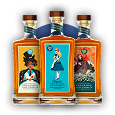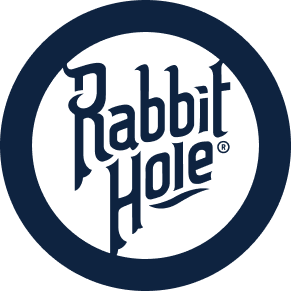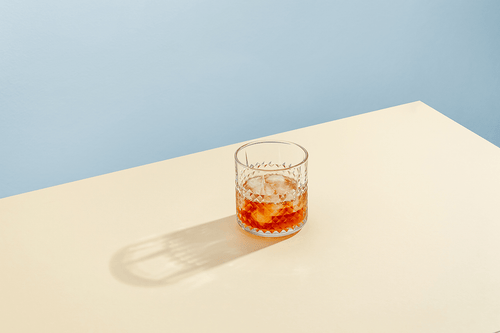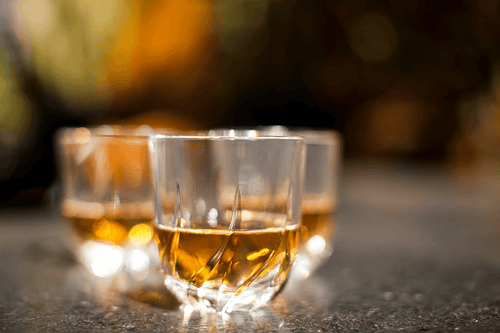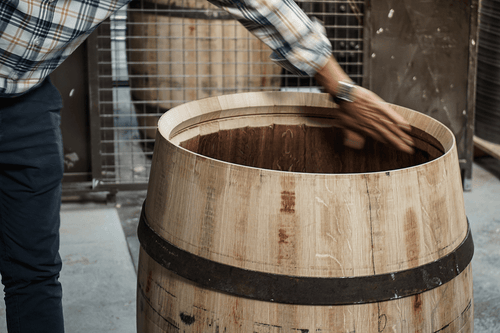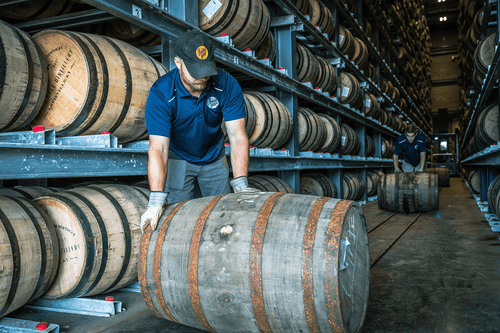How Vodka Is Made
HOW VODKA IS MADE
The next 30% of the product is known as the "heart." This is the best part of the distillation and therefore the only liquid that will go on to the next steps. The last 35% is the "tail." Some vodka makers will keep the tail for further distillation in the next batch to get a little more product from it. The tail is still too impure to use as-is...

Vodka is a time-honored drink that's mentioned in English literature as early as the 18th century. Historically, vodka hails from Poland, Russia, and Sweden. The area stretching from Poland and Scandinavia up through northeastern Europe is known as the vodka belt for its significant production and consumption of the beverage.
Vodka has earned a popular place on American liquor shelves as well. This clear, flavorless liquor is traditionally consumed neat and freezer chilled. However, it's also an easy selection for mixed drinks because of its mild flavor profile which can pair deliciously with nearly anything. Read on to find out what ingredients go into vodka and how it's made.
Fermentation
As with any alcoholic beverage, the first step to making vodka is fermentation. The fermentation process involves feeding sugar to yeast so that the yeast will produce alcohol. You can make vodka from any starchy or high sugar plant matter mixed with yeast and water. Most vodkas are made using a blend of grains like rye, wheat, malt, flaked maize, corn, or sorghum. These grains contribute to a very neutral flavor profile, which is the prime goal for many vodka producers.
You can also make vodka with more flavorful ingredients, like potatoes, soybeans, rice, sugar beets, honey, maple sap, grapes, or apples. Vodkas made from these ingredients tend to have a more distinctive flavor profile. While this can add some intrigue to your sipping experience, it's important to pay attention to the ingredients in a bottle of vodka before using it in your favorite mixed drink, as the differences may carry over into your finished beverage.
Each vodka maker uses their own proprietary yeast strain to ferment their chosen foodstuff. For high starch foodstuffs, the vodka maker may also add enzymes to help break the starch down into edible sugars that the yeast can consume. The vodka maker typically heats and stirs the base ingredients to ensure they're well blended prior to fermentation.
The fermentation process for making vodka usually takes one to two weeks. When complete, the vodka maker strains away the solids, leaving only the liquid base. This results in an ethanol or ethyl alcohol product with about 16% alcohol by volume (ABV).
Distillation
Distillation is the process of purifying a liquid by heating it in a still until it evaporates and becomes a vapor. Alcohol boils at a lower temperature than water, so the distillation process effectively separates the alcohol from the water. When the liquid evaporates, it also leaves many of its impurities behind. The vapor then recondenses into a purer liquid with a higher alcohol content. To make flavored vodka, vodka makers may add botanicals during the distillation process.
Some vodka makers distill their product only once, while others repeat the process several times. The finished vodka should catch on fire before passing on to the next stage of the production process. If the vodka is too weak to light, it must go through the distillation process again. Each subsequent distillation increases the alcohol content further. Some still masters can achieve a product that's as much as 96% ethanol.
When the distillation process is complete, the vodka maker must sort the resulting product. The first 35% of the distillation produces a potentially toxic ethanol product known as the "head" or "foreshot." This may contain acetone or methanol. The heads are usually discarded.
The next 30% of the product is known as the "heart." This is the best part of the distillation and therefore the only liquid that will go on to the next steps. The last 35% is the "tail." Some vodka makers will keep the tail for further distillation in the next batch to get a little more product from it. The tail is still too impure to use as-is.
Dilution
Since the distillation usually produces alcohol that's too strong to drink, dilution is necessary to get the product down to the appropriate ABV. In the United States, standard vodkas are 40% ABV. The European Union established a minimum alcohol content of 37.5% for its vodkas, allowing for slightly more dilution.
Some producers bottle and sell alcohol before the dilution process. This results in a product like Everclear, which is up to 190 proof. These products, known as rectified spirits, are not meant for consumption on their own. Rectified spirits should be diluted with water or another liquid to achieve a safe ABV. Since these products are potentially dangerous on their own, rectified spirits are banned in some states.
Vodka is usually diluted with pure distilled water. Traditional vodka makers aim to produce a product that's nearly flavorless with no distinctive palette of its own. Therefore, water is the best choice for distillation, so the alcohol doesn't take on the flavor of anything else.
Filtration
Vodka may go through the filtration process before or after dilution. Vodka makers typically use carbon or charcoal to filter their products. Some producers filter their vodka through other media, such as quartz crystals or lava rocks. Filtration helps to ensure clear, clean vodka that won't become cloudy over time.
Though filtration is common with most vodkas, some traditional vodka makers omit this step. These producers rely more heavily upon their distillation technique to produce pure vodka.
Flavoring
Flavored vodkas can be found around the world. Each producer uses their own method to add flavoring to the product. While some may include the flavoring during the distillation process, many wait until after the alcohol has been distilled to add flavors like ginger, fruit, vanilla, or chocolate. Honey and pepper flavored vodkas are popular in Russia. Fruity flavors are more common in Estonia, where you can find cherry, lemon, black currant, and watermelon vodkas. Poland and Lithuania have a famous honey-flavored vodka known as krupnik.
Vodka's simple, straightforward production process aligns perfectly with its clean taste. When you're looking for a versatile liquor that can fill many needs, vodka will rarely let you down. Understanding just how this product is made, you'll find you're better equipped than ever to mindfully select the right vodka for your shelf.
For a truly unique and one-of-a-kind vodka expression, consider Liddel Vodka - sold exclusively online through Rabbit Hole Distillery. You can also purchase a bottle at the Rabbit Hole Distillery Overlook bar, or in the retail shop.














